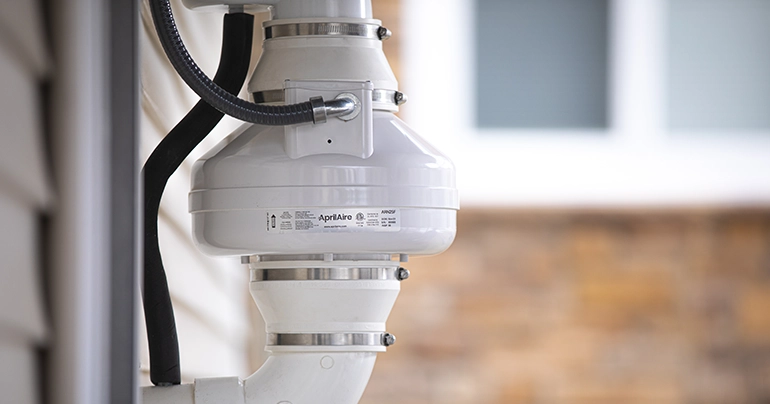How to Protect Your Home from High Radon Levels
2 minute read
Radon is a colorless, odorless, and tasteless gas that can seep into your home from the ground below. As a naturally occurring radioactive gas, it’s a serious health risk, and long-term exposure can lead to lung cancer. According to the Environmental Protection Agency (EPA), radon is the leading cause of lung cancer in nonsmokers in the United States. The good news is that if your home tests high for radon, there are effective steps you can take to reduce it and protect your family.
Step 1: Test Your Home for Radon
The first step to addressing radon is confirming its presence and concentration levels in your home. Radon testing kits are widely available and easy to use. AprilAire Short-Term Radon Test Kits are a convenient and reliable option, designed to measure radon levels in just a few days.
The EPA recommends taking action if your home’s radon levels are at or above 4 picocuries per liter (pCi/L).
Step 2: Contact a Healthy Air Professional
Once you’ve confirmed elevated radon levels, your next step is to contact an AprilAire Healthy Air Professional. These experts specialize in radon mitigation and can provide guidance tailored to your home’s unique needs. Schedule an appointment to assess your home and discuss mitigation options.
Step 3: Professional Assessment and Mitigation Plan
A Healthy Air Professional will evaluate your home to determine the best radon mitigation solution, which may include installing a vent pipe system and a fan. Together, these components work to draw radon gas from beneath your home and safely release it above the roofline, away from windows and openings, preventing radon from accumulating indoors. AprilAire Radon Mitigation Fans are central to this process, designed for efficiency, durability, and quiet operation. Engineered to effectively remove radon gas, these fans ensure best-in-class performance and are built to last in a variety of installation settings.
To further limit radon entry points, sealing cracks and openings in your foundation is also recommended. Every home is unique, and your professional will customize a solution tailored to your specific needs, providing safety, reliability, and peace of mind for your family.
Step 4: Post-Mitigation Testing
After your radon mitigation system is installed, it’s important to conduct a post-mitigation radon test. This ensures that the system is working effectively and that radon levels have been reduced.
Step 5: Continue to Test for Radon Annually
Radon levels can fluctuate over time due to environmental changes or shifts in your home’s structure. To ensure ongoing safety, plan to test your home for radon at least once a year. Consider using continuous radon monitors, like those from Airthings or Ecosense, for real-time insights into your home’s air quality.
Take Action Today
High radon levels are a serious issue, but with the right approach, you can reduce your family’s exposure and enjoy peace of mind. Start by testing your home, and if elevated radon levels are detected, reach out to a local Healthy Air Professional for help. AprilAire Radon Mitigation solutions make it easier than ever to protect your home and loved ones.
Don’t wait to address high radon levels—take action today to ensure your home is a safe haven.
